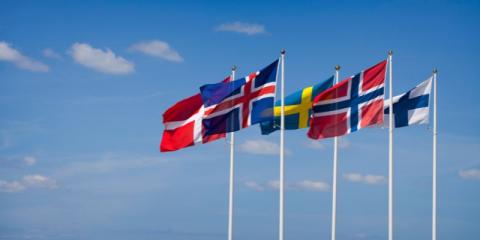The Nordic region, consisting of Denmark, Finland, Iceland, Norway, and Sweden, is known for its high standard of living and robust economies. In 2012, these countries combined had a total GDP of 1.603 trillion USD, which is a significant number compared to other regions such as the Baltic states or the Caucasus.
When looking at the GDP of each country, Sweden had the highest with 525.7 billion USD, followed by Norway with 499.7 billion USD, Denmark with 314.2 billion USD, Finland with 250 billion USD, and Iceland with 13.66 billion USD. However, when considering GDP per capita, the picture changes. Norway leads the way with a GDP per capita of 99,550 USD, followed by Denmark with 56, 210 USD, Sweden with 55, 244 USD, Finland with 46, 178 USD, and Iceland with 42, 658 USD.
One reason for Norway's high GDP per capita could be its vast oil reserves. Norway is one of the world's largest exporters of oil and natural gas, which significantly contributes to its economy. In addition to its oil industry, Norway also has a strong shipping industry, fishing industry, and a well-developed tourism sector.
Denmark is another prosperous country in the Nordic region, known for its strong agricultural sector, advanced technology, and a highly skilled workforce. Denmark is also known for its social welfare programs, which provide a safety net for its citizens. The country has a high standard of living and is consistently ranked as one of the happiest countries in the world.
Finland, on the other hand, has a strong technology sector, particularly in the field of electronics and mobile phones. The country is home to companies such as Nokia, which has had a significant impact on Finland's economy. In recent years, Finland has also become a hub for startups and innovation, which has further contributed to its economic growth.
Iceland has a diverse economy, with industries ranging from fishing and tourism to financial services and technology. The country is known for its abundant natural resources, including geothermal energy and hydropower, which play a significant role in its economy.
Finally, Sweden is known for its strong economy, high standard of living, and well-developed infrastructure. The country is home to several multinational companies, including IKEA, H&M, and Volvo, which have had a significant impact on Sweden's economy. In addition to its industrial sector, Sweden also has a thriving tech industry and is a leader in renewable energy.
In conclusion, the Nordic region has a robust and diverse economy, with each country contributing to its overall prosperity. From Norway's oil industry to Denmark's social welfare programs, each country has its own strengths and unique factors that contribute to its economic growth. Overall, the Nordic region is a great example of how a well-functioning economy can lead to a high standard of living and prosperity for its citizens.
